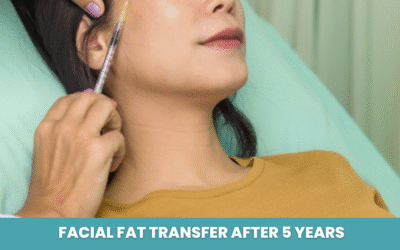
Vascular Laser in Dermatology in Jaipur
“LASER” is an abbreviation for Light Amplification by Stimulated Emission of Radiation. Vascular lasers focus on undesired or abnormal blood vessels in the skin while causing minimal damage to nearby skin.
Choosing the right dermatologist is critical, especially if you have a chronic skin condition that requires ongoing care. We want you to be confident that you receive the best possible care. We also want you to be as easy with your dermatologist as possible.
At Rejuvena Cosmo Care, Dr. Deepesh Goyal endeavours to provide the best vascular laser treatment in Jaipur that is safe, effective, and affordable.
He is a highly qualified and experienced dermatologist and vascular laser surgeon in Jaipur who has assisted many clients with their aesthetic requirements. His knowledge and expertise make him a sought-after plastic and cosmetic surgeon in Jaipur.
We use many different types and combinations of lasers to treat vascular lesions and various skin conditions at Rejuvena Cosmo Care, one of the best vascular laser clinics in Jaipur.
Our goal is to provide you with all of the care you require when experiencing these issues. We want to make it as simple as possible for you to find the best vascular laser in Jaipur.
In this article, we will learn more about vascular lasers in dermatology.
What Exactly are Vascular Lasers?
 Vascular lasers specifically target unwanted or impaired blood vessels in the skin, causing minimal damage to the adjacent skin.
Vascular lasers specifically target unwanted or impaired blood vessels in the skin, causing minimal damage to the adjacent skin.
Modern vascular lasers are highly safe and effective when used by well-trained personnel. They are generally more effective on the face than other body parts, and multiple treatments are often required to achieve the best results.
Now, let’s know,
Contact us for more information or book an appointment
Different Types of Vascular Lasers
Vascular laser technology has evolved significantly in recent decades. There are numerous laser types and combinations that can be used to treat vascular lesions, including:
Continuous or Quasi-continuous wave lasers
- Argon lasers
- Argon pumped tunable dye lasers
- Krypton lasers
- KTP – Potassium Titanyl Phosphate lasers
Pulsed lasers
- PDL – Pulsed dye laser
- Long-pulse dye lasers
- Frequency-doubled Q-switched Nd: YAG laser
Intense Pulsed Light (IPL) is not a laser but can be used to treat vascular lesions by delivering an appropriate wavelength of light through filters.
Which Conditions Can Vascular Lasers Treat?
The following conditions can be treated with vascular lasers:
- Port-wine stain birthmarks
- Ruptured capillaries
- Facial and neck redness
- Rosacea
- Leg veins
- Stretch marks
- Warts
Now, let’s discuss,
Contact us for more information or book an appointment
The Procedure of Vascular Laser Treatment
- Your dermatologist will evaluate your condition and determine whether you are a candidate for vascular laser treatment. The best results are usually obtained through a series of treatments over time.
- To reduce the risk of bruising, you may be advised to discontinue any non-essential blood thinners (such as aspirin) or supplements (such as fish oil) for 1 to 2 weeks before treatment. Anesthetic (“numbing”) creams may be applied before the procedure to reduce discomfort in the treated area.
- Most people are reclined or lying down during treatment, depending on the treatment area. You and your vascular laser surgeon in Jaipur will be wearing safety glasses.
- The laser parameters will be set based on your specific condition, skin type, and other factors. Many lasers produce a bright “flash” that feels like a hot elastic band being snapped against the skin during treatment.
- Rather than simply burning through the skin’s surface, vascular lasers heat the blood vessels just beneath the surface.
- This makes the treatment very effective, and there is very little heating on the skin’s surface, lowering the risk of skin damage.
- Vascular lasers emit a wavelength of light that is strongly attracted to blood cells’ red pigment (oxyhemoglobin). Heat is generated when enough light is concentrated in a blood vessel, and if enough heat is produced, the blood vessel can be closed off.
- After treatment, you may be given cold or ice packs to reduce swelling and discomfort. Following any laser treatment, it is critical to protect the skin from sun exposure.
- Your doctor may advise you to avoid physical activities such as vigorous exercise, which can cause blood vessels to dilate.
- Port-wine stains in children over the age of 6 months are treated in a hospital under general anesthesia by a trained dermatologist.
Post-treatment Care
- After vascular laser treatment, the doctors usually prescribe an anti-inflammatory cream to alleviate any pain or discomfort. Some people must also wear compression stockings after leg treatment.
- The most important thing is to avoid sun exposure and hot places that raise body temperature significantly.
Recovery from Vascular Laser Treatment
- Some patients report a slight stinging sensation, similar to a sunburn. Others report only minor pain.
- After your treatment, you may notice some redness; however, this usually goes away within a few hours.
- While the skin heals, you may be asked to apply a moisturizer to keep the treated area moist and provide a barrier against infection and pollutants.
- Bruising may occur for up to a week after the procedure in some patients.
Curious about the possibilities? Consult with Dr. Deepesh Goyal for your customized makeover plan.
FREQUENTLY ASKED QUESTIONS
Who is not suitable for vascular laser treatment?
Vascular laser treatment may not be appropriate for you:
- If you are pregnant or breastfeeding
- Have taken the drug isotretinoin in the last six months
- Have an infection at the treatment site
- Have a medical history of keloid scars
- Take certain medications
- Have a medical condition that causes increased sensitivity to light
- Have unrealistic expectations
How many treatments will be required?
This depends on the nature of the condition, its severity, and the degree of improvement desired. Vascular problems do reoccur, and maintenance treatments are often required.
How long do treatments last?
Most vascular laser treatments should be spaced out by 4-6 weeks. Doctors usually space treatments for birthmarks every eight weeks. It is fine if the time between treatments is longer; it will simply take longer to achieve the best results.
What are the risks associated with vascular lasers?
- Side effects may vary depending on the type of laser used. The most common side effects are usually temporary, including redness, bruising, swelling, and crusting.
- Blistering, skin lightening or darkening, skin thinning, and scarring are rare side effects. Cooling devices can help to reduce risks.
- When the skin is heavily tanned, it is best to avoid laser treatment because it increases the possibility of colour changes in the skin.
- You must follow pre-and post-treatment instructions.
Are vascular lasers safe to use?
Vascular lasers are safe when used by trained and experienced personnel. Since the 1980s, pulsed dye lasers have been used to treat port-wine stain birthmarks in children. They are not linked to an increased risk of cancer over time.
Recent Posts
How to Treat Hyperpigmentation after Chemical Peel
A chemical peel is a skin‑resurfacing technique in which a specially formulated solution is...
Facial Fat Transfer After 5 Years
As we age, the natural fat beneath our skin begins to thin, leading to sagging, hollow cheeks, and...
Stomach Liposuction Results Week by Week
Stomach liposuction is a popular cosmetic surgery designed to target stubborn fat around the...



